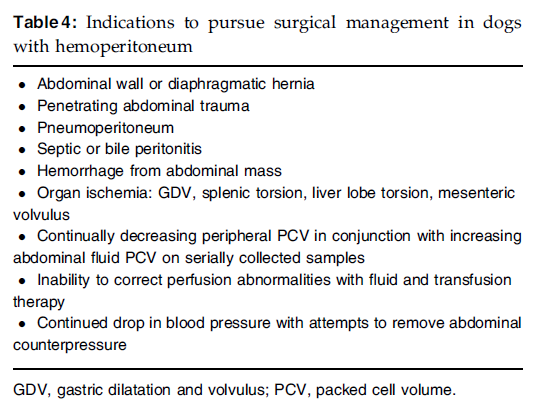Clinical evaluation and management of hemoperitoneum in dogs
Article first published online: 4 FEB 2008
DOI: 10.1111/j.1476-4431.2007.00265.x
© Veterinary Emergency and Critical Care Society 2008
Issue
Journal of Veterinary Emergency and Critical Care
Additional Information(Show All)
Abstract
Objective: Review the clinical presentation, assessment, resuscitation, and medical and surgical management of dogs with hemoperitoneum.
Etiology: Hemoperitoneum is defined as free intra-abdominal hemorrhage. Hemoperitoneum occurs from traumatic and nontraumatic causes. Common etiologies include atraumatic rupture of intra-abdominal masses, coagulopathies, as well as blunt, and penetrating trauma to the abdomen.
Diagnosis: Definitive diagnosis of hemoperitoneum entails demonstration of free intra-abdominal blood via paracentesis or diagnostic peritoneal lavage. Imaging and other diagnostic tests including coagulation studies may help to determine underlying causes of hemoperitoneum or concurrent organ dysfunction.
Therapy: Goals of therapy for patients with hemoperitoneum include maintenance and restoration of effective circulating volume, maintenance and restoration of oxygen-carrying capacity, and arrest of hemorrhage. These goals can be achieved via fluid resuscitation, administration of blood products or hemoglobin-based oxygen carriers, as well as application of abdominal counterpressure, and surgical intervention. Surgery usually is required for bleeding intra-abdominal neoplasms. Emergency surgery is recommended for hemorrhaging patients with penetrating trauma, gastric dilatation and volvulus, bleeding cysts, liver lobe torsion, splenic torsion, and any other condition resulting in organ ischemia.


No comments:
Post a Comment